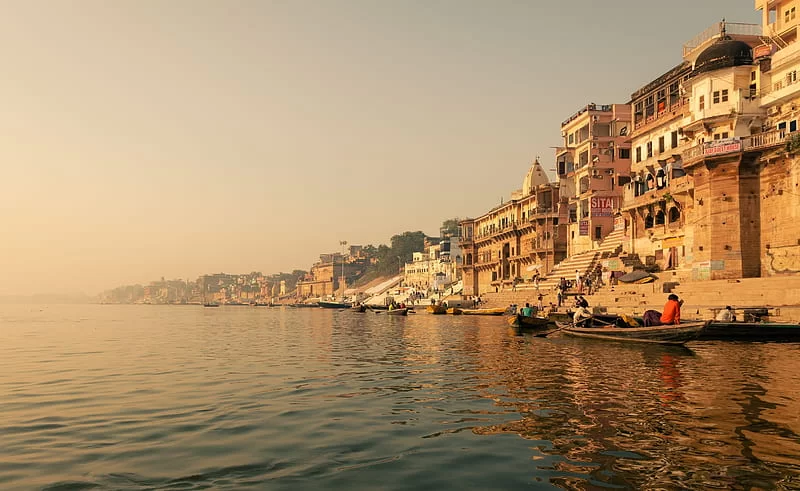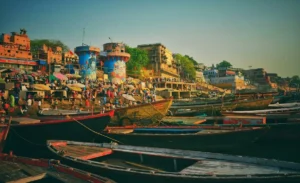Introduction:
Embarking on a spiritual journey through the heartland of India, a Varanasi-Ayodhya trip offers a profound experience filled with cultural richness, historical significance, and spiritual awakening. This detailed guide aims to assist travelers in planning a seamless and memorable expedition to these two iconic cities.
The Significance:
Before diving into the planning process, it’s crucial to grasp the cultural and historical importance of Varanasi and Ayodhya. Varanasi, also known as Kashi, is one of the oldest inhabited cities globally and holds immense religious value for Hindus. Ayodhya, on the other hand, is revered as the birthplace of Lord Rama, a key figure in Hindu mythology. The spiritual ambiance of these cities makes them an ideal destination for those seeking a transformative journey.
Crafting the Itinerary:
- Varanasi Exploration:
Ganga Aarti at Dasaswamedh Ghat:
The Ganga Aarti at Dasaswamedh Ghat is a quintessential Varanasi experience. Plan to arrive early to witness the meticulous preparations, with priests adorning traditional attire and setting up elaborate arrangements. As the sun sets, the ceremony commences with rhythmic chants, incense, and the synchronized movement of lamps. Participate in the mesmerizing ritual, and consider hiring a boat for a unique perspective from the Ganges.
Morning Boat Ride:
The early morning boat ride along the Ganges is a serene encounter with Varanasi’s spiritual heartbeat. Engage with local boatmen for a personalized experience as they navigate through the ghats. Witness the morning rituals, including yoga practitioners, pilgrims taking ritualistic dips, and the ethereal play of light on ancient architecture. This immersive journey provides a glimpse into the sacred routines that define life along the river.
Temples and Ghats:
Explore the architectural marvels and spiritual sanctuaries that dot Varanasi’s landscape. Kashi Vishwanath Temple, dedicated to Lord Shiva, stands as the city’s centerpiece. Navigate through the narrow lanes to reach Sankat Mochan Hanuman Temple, known for its sacred Hanuman idol. Delve into the vibrant atmosphere of Assi Ghat and the poignant rituals at Manikarnika Ghat, where cremations symbolize the cycle of life and death.
- Ayodhya Exploration:
- Ram Janmabhoomi:
At the heart of Ayodhya lies Ram Janmabhoomi, the revered birthplace of Lord Rama. The site holds immense historical significance and has been a focal point of religious and cultural debates. As you navigate through the complex, appreciate the architecture, and observe the reverence that permeates the air. Stay informed about any specific guidelines or restrictions in place, as this site holds paramount importance to millions.
- Hanuman Garhi:
Perched atop a hill, Hanuman Garhi offers panoramic views of Ayodhya. The temple, dedicated to Lord Hanuman, is a prominent pilgrimage site. Ascend the steep staircase to the temple complex, where devotees offer prayers and seek blessings. The tranquil surroundings and the towering statue of Lord Hanuman create a serene atmosphere conducive to introspection and spiritual contemplation.
- Kanak Bhawan:
Dedicated to Lord Rama and Sita, Kanak Bhawan is renowned for its intricate architecture and religious significance. The temple is believed to have been a gift from Queen Kaikeyi to Sita during their wedding. Admire the vibrant frescoes and murals that narrate the epic tale of Ramayana. Engage with the temple priests to gain insights into the historical and cultural nuances embedded in this sacred space.
Explore more about Ayodhya here: 27 Places to Visit in Ayodhya in 2024
Accommodation and Transportation:
Accommodation:
Varanasi: Choose accommodation near the ghats for a more immersive experience. Options range from budget guesthouses to luxurious hotels like Taj Ganges.
Ayodhya: Opt for hotels or guesthouses in close proximity to major temples. The Clarks Inn or Ramprastha are good choices for a comfortable stay.
Transportation:
Varanasi to Ayodhya: The distance between Varanasi and Ayodhya is approximately 200 kilometers. Consider hiring a cab or using state transport buses for a convenient journey.
Local Transportation: In both cities, auto-rickshaws and cycle-rickshaws are popular modes of local transport. Walking is also an excellent way to explore the narrow lanes of Varanasi.
Cultural Étiquettes:
Dress Modestly:
As both Varanasi and Ayodhya are religiously significant, it’s essential to dress modestly, covering shoulders and knees, especially when visiting temples.
Respect Local Customs:
Be respectful of local customs and rituals. Seek guidance from locals or temple authorities if you are unsure about the proper conduct during religious ceremonies.
Essential Tips:
Weather Considerations:
Check the weather forecast before planning your trip. Winters (October to March) are pleasant, while summers can be scorching.
Hydration and Health:
Carry a water bottle and stay hydrated, especially during summer months. Be cautious with street food to avoid health issues.
Conclusion:
A Varanasi-Ayodhya trip is not just a physical journey; it’s a spiritual odyssey that delves into the essence of Hindu culture and mythology. By carefully planning your itinerary, respecting local customs, and immersing yourself in the spiritual aura of these cities, you are sure to create lasting memories of a transformative voyage through the heart of India.







